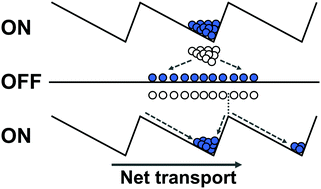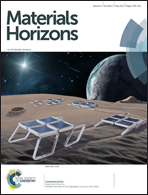An introduction to ratchets in chemistry and biology
Abstract
This article is an accessible introduction to ratchets and their potential uses. A ratchet can dramatically improve directional transport of classical or quantum particles in systems that are dominated by random diffusion. The key idea is that ratchets do not overcome poor conductivity with strong gradients, but rather use non-directional sources of energy like heat or chemical energy to power unidirectional transport, making the ratchet a Maxwell's demon. We introduce the ratchet concept and its inspiration from biology, discuss the terminology used in the field, and examine current progress and ideas in ratcheting electrons and classical particles.

- This article is part of the themed collections: Focus article collection and Celebrating Excellence in Research: 100 Women of Chemistry


 Please wait while we load your content...
Please wait while we load your content...